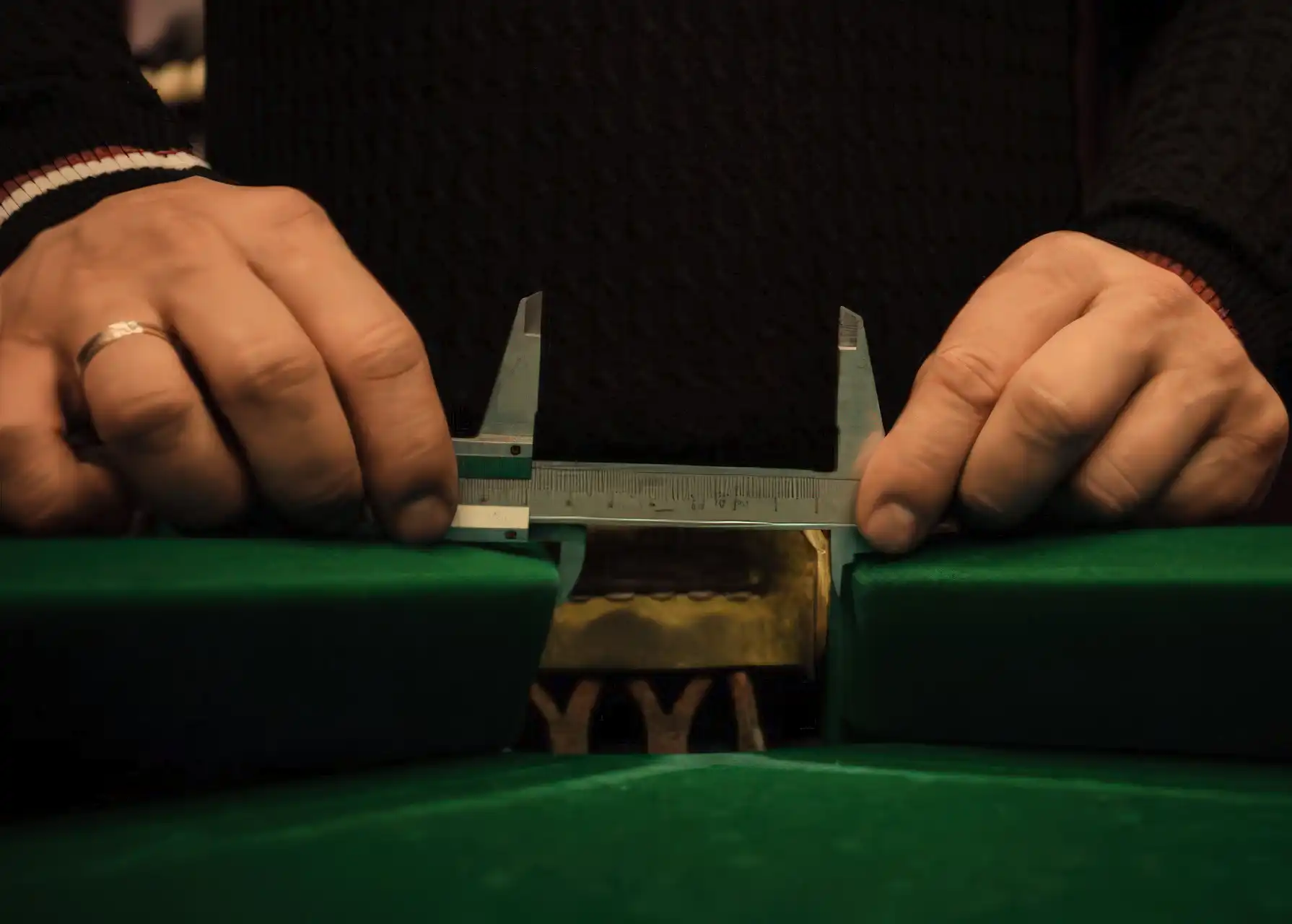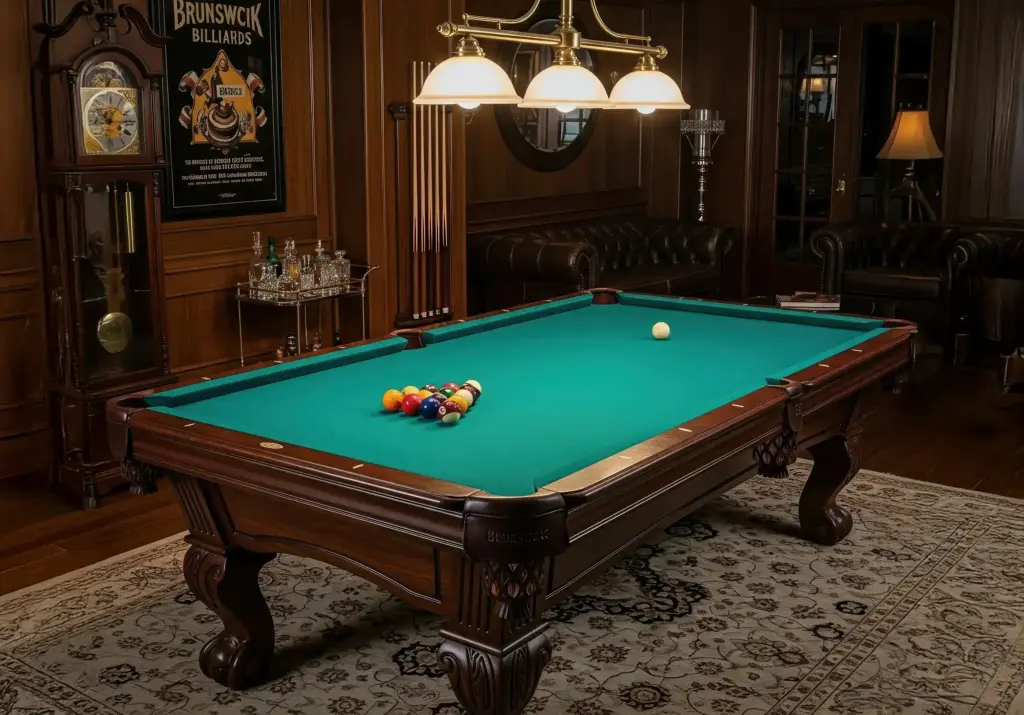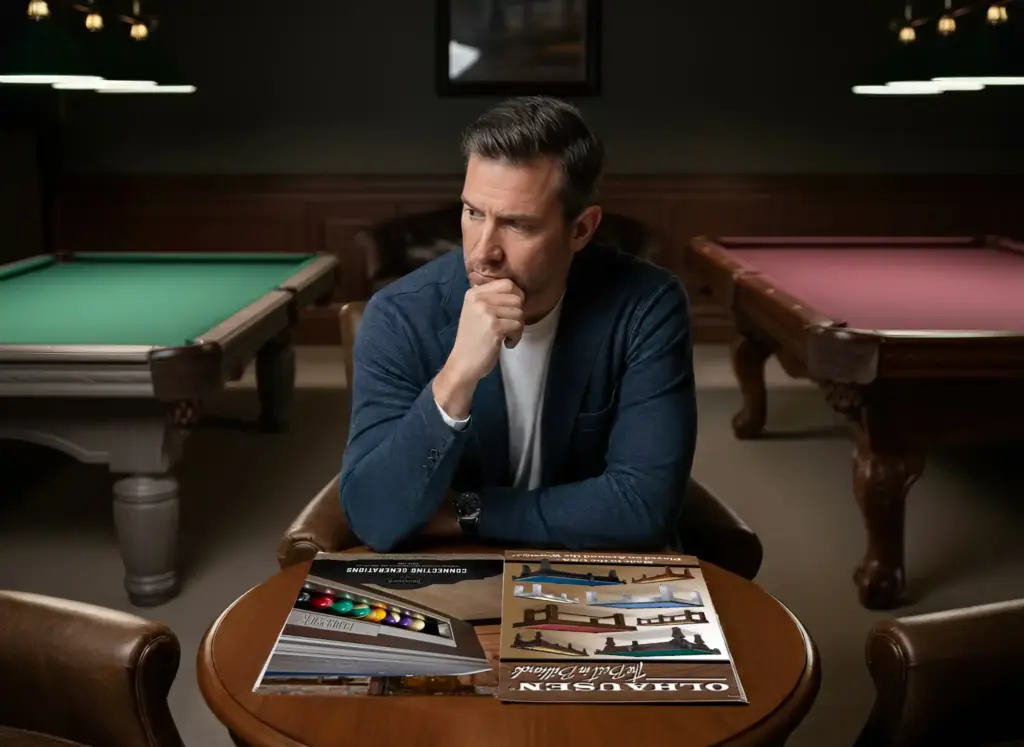A beloved pool table is the heart of any game room, the source of countless hours of friendly competition and entertainment. But over time, wear and tear can diminish its playability and appearance. That’s where pool table restoration comes in—reviving a worn surface, unresponsive cushions, or an uneven roll to turn your treasured centerpiece back into a source of pride.
Introduction
If your pool table has lost its former glory, you don’t have to replace it. A professional pool table restoration can breathe new life into your investment, reviving its performance and beauty for years to come. This guide will walk you through the entire process, from identifying the tell-tale signs that your table needs attention to understanding the detailed steps involved in bringing it back to pristine condition. Whether you’re considering a DIY project or seeking expert help, understanding the art of pool table restoration is the first step toward reclaiming the perfect playing experience. As the largest authorized dealer for Brunswick and Olhausen in Canada, Hallmark Billiards has the expertise to guide you through every aspect of pool table repair and maintenance.
Recognizing the Signs: When to Consider Pool Table Restoration
Knowing when your table needs professional attention is key. Obvious signs include visible damage, but other, more subtle clues can also indicate it’s time for a restoration.
Worn or Damaged Felt
The most apparent sign is the condition of the playing surface. Look for:
- Tears, rips, or holes in the cloth.
- Significant stains from spills that affect the surface.
- Thinning areas or bald spots where the felt has worn down.
- A rough texture that causes the balls to roll inconsistently or lose speed.
Unresponsive or Hardened Cushions
The cushions, or rails, are critical for proper ball rebound. If you notice the balls don’t bounce correctly or die quickly off the rails, your cushions may be compromised. They can become hard as rocks or soft like putty over time, losing their essential elasticity and negatively impacting gameplay.
Uneven Playing Surface
Does a ball roll straight when you test it on different parts of the table? If it veers off course, your table is likely not level. This can be due to issues with the slate itself or the table’s structural integrity. Proper pool table leveling is essential for a fair and enjoyable game.
A Comprehensive Guide to the Pool Table Restoration Process
A full pool table restoration is a meticulous process that involves several key stages. Whether you’re attempting a DIY pool table restoration, or hiring a professional, understanding the steps will help you appreciate the craftsmanship involved.
Step 1: Thorough Assessment
The process begins with a complete inspection of the table to identify every component needing repair or replacement. This includes the felt, cushions, pockets, slate, and the wooden frame and legs.
Step 2: Careful Disassembly
The table is methodically taken apart. This involves removing the rails, pockets, and old felt to access the slate beneath. All hardware is carefully organized to ensure a smooth reassembly.
Step 3: Component Restoration
Each part of the table is addressed individually.
- Woodwork: The wooden frame, rails, and legs are sanded to remove the old finish. Any scratches or dents are repaired with wood filler before staining or painting and applying a protective sealant.
- Slate: The heavy slate is inspected for cracks or chips, which are repaired with a specialized filler. It is then meticulously leveled.
- Pool Table Felt Replacement: New felt is stretched tightly and evenly across the slate to create a perfectly smooth, wrinkle-free playing surface.
Step 4: Precise Reassembly
The table is carefully put back together. The rails, with new or repaired cushions, and pockets are reattached to the frame. A final check of the pool table leveling ensures optimal playing conditions.
Professional Repair vs. DIY: Cost Comparison (Toronto, CAD)
Deciding whether to restore your table yourself or hire an expert depends on cost, time, and your skill level. While a DIY approach can save on labor costs, it requires specialized tools and carries the risk of costly mistakes if not done correctly.
| Feature | DIY Restoration (Materials Cost) | Professional Service Cost |
| Refelting Pool Table | $200 – $400 | $400 – $800+ |
| Cushion Replacement | $150 – $300+ (rubber only) | $300 – $500+ |
| Wood Refinishing | $100 – $300+ (materials only) | $400 – $800+ |
Understanding these costs is the first step to making an informed decision that suits your budget and desired outcome.
The Lasting Benefits of a Professional Pool Table Restoration
Restoring your pool table offers more than just a new look; it enhances the entire playing experience.
- Enhanced Gameplay: New felt and responsive cushions ensure consistent ball roll and accurate rebound, elevating the quality of play.
- Increased Lifespan: Proper restoration extends the life of your table, protecting your initial investment for many more years.
- Preserving Value: For antique pool table restoration, professional service is crucial to maintain the historical and monetary value of the piece.
- Customization: Restoration is the perfect opportunity to personalize your table with a new felt color or upgraded components that match your game room’s decor.
FAQ
What are the first signs my pool table needs refelting?
The most common signs include visible tears, stains, or a rough surface that causes balls to roll unevenly. If the felt is thin or has bald spots, it’s time for a pool table felt replacement.
Can I replace the pool table cushions myself?
While it is possible, pool table cushion replacement is a delicate process. It involves removing the old rubber, applying new cushions with strong adhesive, and ensuring they are perfectly aligned. An improper installation can ruin gameplay, so professional service is often recommended.
How often should pool table maintenance be performed?
Regular pool table maintenance, like brushing the felt and checking the table’s level, should be done frequently. A more thorough restoration, including refelting or cushion replacement, is typically needed every few years, depending on how often the table is used.
Conclusion
A pool table is more than just a piece of furniture; it’s a hub of entertainment and a valuable investment. The art of pool table restoration ensures that it can be enjoyed for generations. From the careful process of replacing worn felt and cushions to the detailed refinishing of the woodwork, a proper restoration revitalizes every aspect of your table. Whether you’re a hands-on enthusiast ready for a DIY project or you prefer the guaranteed quality of expert service, giving your table the care it deserves will bring back the smooth, consistent play you love.
For professional pool table restoration services in Ontario, contact Hallmark Billiards today.




